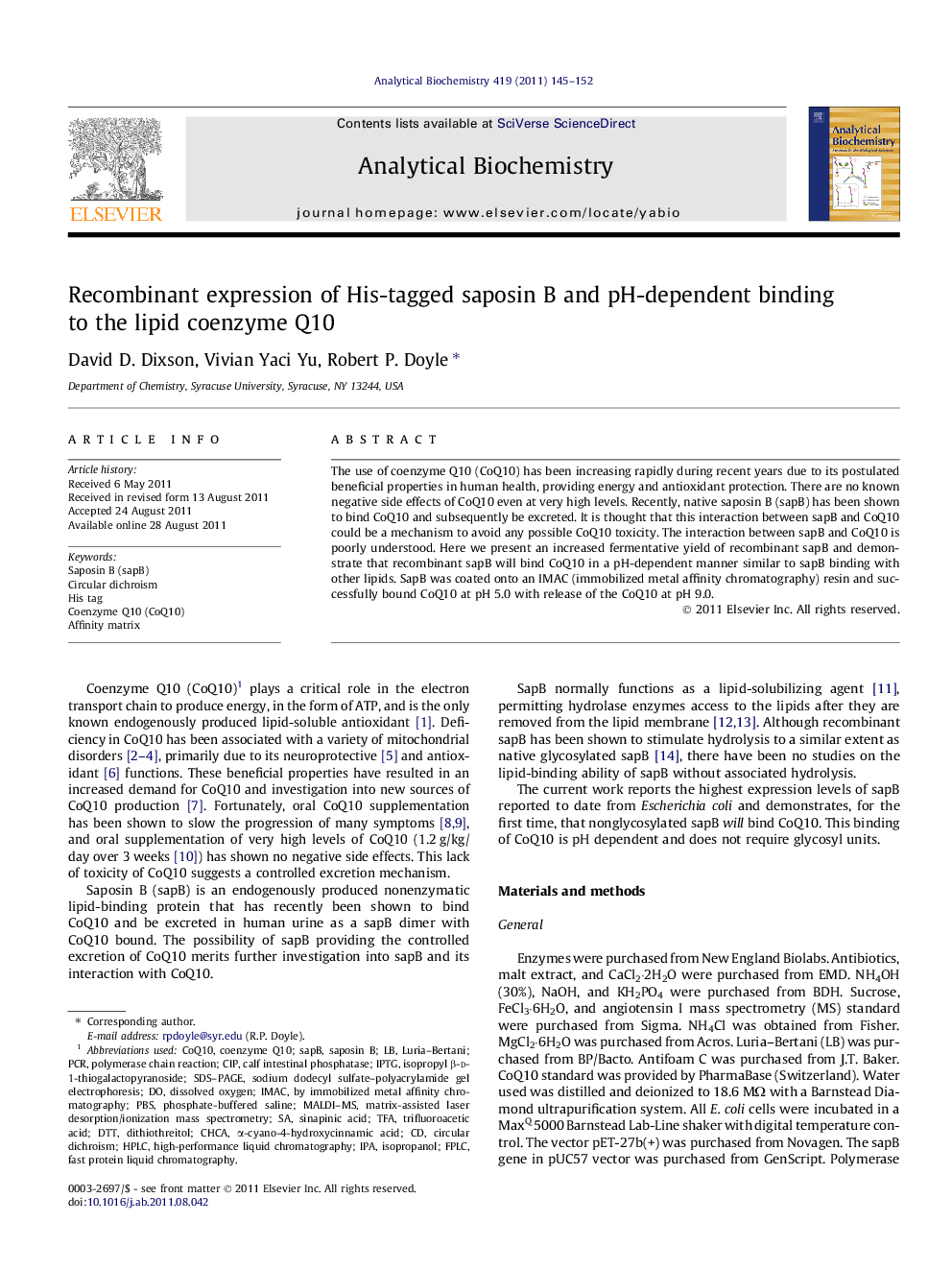| Article ID | Journal | Published Year | Pages | File Type |
|---|---|---|---|---|
| 1173339 | Analytical Biochemistry | 2011 | 8 Pages |
The use of coenzyme Q10 (CoQ10) has been increasing rapidly during recent years due to its postulated beneficial properties in human health, providing energy and antioxidant protection. There are no known negative side effects of CoQ10 even at very high levels. Recently, native saposin B (sapB) has been shown to bind CoQ10 and subsequently be excreted. It is thought that this interaction between sapB and CoQ10 could be a mechanism to avoid any possible CoQ10 toxicity. The interaction between sapB and CoQ10 is poorly understood. Here we present an increased fermentative yield of recombinant sapB and demonstrate that recombinant sapB will bind CoQ10 in a pH-dependent manner similar to sapB binding with other lipids. SapB was coated onto an IMAC (immobilized metal affinity chromatography) resin and successfully bound CoQ10 at pH 5.0 with release of the CoQ10 at pH 9.0.
